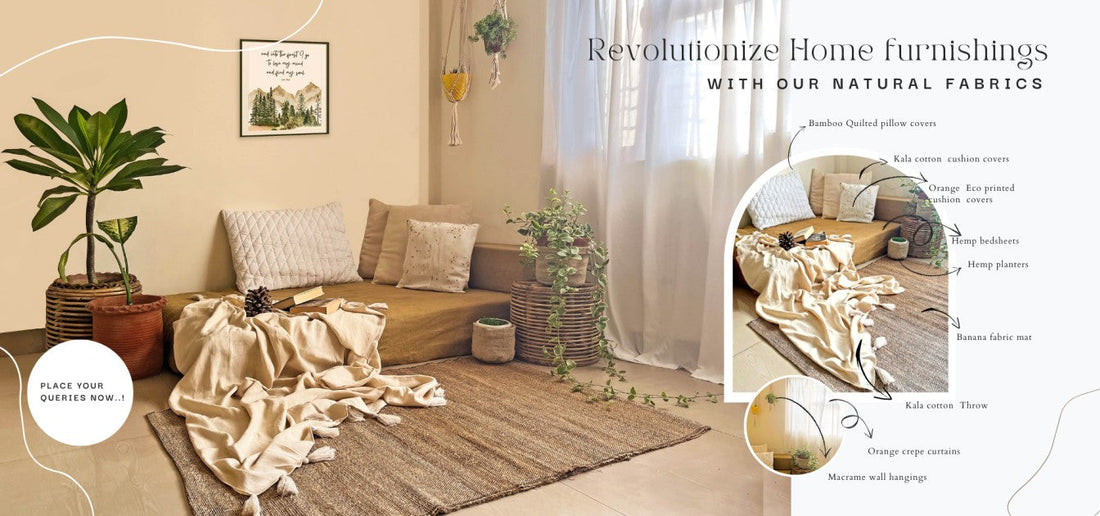
Sustainable Fabric Supplier: Pioneering the Green Revolution in Textiles

Understanding Sustainable Fabrics
Sustainable fabrics are textiles that are produced and processed in ways that have a minimal impact on the environment. These textiles aim to reduce the environmental footprint of the fashion and textile industry, which is notorious for its water and energy consumption, chemical usage, and waste generation. Sustainable fabrics can be sourced from a variety of materials and production methods, including:
1. *Organic Cotton*: Organic cotton is grown without synthetic pesticides and fertilizers. It promotes soil health and reduces the harmful effects of conventional cotton farming.

2. *Hemp*: Hemp is a rapidly renewable resource that requires minimal water and pesticides. It's known for its strength and durability.

3. *Tencel and Modal*: These fabrics are produced from sustainably sourced wood pulp, often from eucalyptus and beech trees. The closed-loop production process minimizes waste and water usage.
4. *Recycled Fabrics*: These include textiles made from recycled plastic bottles or post-consumer textiles, reducing the need for virgin resources.
5. *Khadi*: Khadi is handspun and handwoven fabric, and its production supports traditional craftsmanship and rural livelihoods.
6. *Peace Silks*: Also known as Ahimsa silk, these are produced without killing silkworms, making them a cruelty-free alternative.

The Role of a Sustainable Fabric Supplier
A sustainable fabric supplier plays a critical role in bridging the gap between environmentally conscious businesses and the growing demand for sustainable textiles. Here are some key responsibilities of a sustainable fabric supplier:
Curating a Diverse Range of Sustainable Fabrics
One of the primary responsibilities of a sustainable fabric supplier is to offer a wide variety of eco-friendly textiles. This ensures that businesses can find fabrics that align with their specific needs, whether it's for clothing, home textiles, or other applications. A diverse inventory of sustainable fabrics enables designers and manufacturers to make eco-conscious choices without compromising on quality or aesthetics.
Ensuring Transparency and Traceability
Transparency is essential in the world of sustainable fabrics. A reputable supplier will provide detailed information about the sourcing and production of each fabric. This includes details about the cultivation, processing, and certification of the textiles. Transparency ensures that the fabrics meet the required environmental and ethical standards.
Meeting Certification Standards
Sustainable fabrics often come with certifications that validate their eco-friendliness. These certifications, such as Global Organic Textile Standard (GOTS), OEKO-TEX, and Fair Trade, provide assurance that the fabrics are produced with minimal harm to the environment and fair labor practices. A reliable sustainable fabric supplier will stock fabrics with relevant certifications, making it easier for businesses to choose the right materials.
Providing Custom Solutions
Different businesses have different needs. A sustainable fabric supplier should offer customization options that allow businesses to tailor fabrics to their specific requirements. Whether it's custom colors, blends, or finishes, these options enable brands to create unique and sustainable products that resonate with their target audience.

Supporting Sustainable Practices
Collaboration with a sustainable fabric supplier is more than just a transaction. It's a partnership in supporting sustainable practices. Suppliers often work with manufacturers to ensure responsible production and offer guidance on reducing waste and optimizing processes.
Sustainable Fabrics: A Game Changer for Fashion and Beyond
Sustainable fabrics are not limited to a niche market; they are gaining momentum in the mainstream fashion industry. Brands are increasingly adopting sustainable textiles as consumer awareness about the environmental impact of fast fashion grows. Sustainable fashion is no longer a trend; it's a paradigm shift.
 As a business, choosing a sustainable fabric supplier is a strategic decision that can shape your brand's identity and contribute to the greater good. It's an investment in a future where fashion is in harmony with nature and where consumers are more mindful of their choices.
As a business, choosing a sustainable fabric supplier is a strategic decision that can shape your brand's identity and contribute to the greater good. It's an investment in a future where fashion is in harmony with nature and where consumers are more mindful of their choices.
The Global Shift Towards Sustainable Fabrics
The adoption of sustainable fabrics is not confined to a specific region. It's a global movement. Businesses around the world are recognizing the importance of adopting sustainable practices in their supply chains. As a result, sustainable fabric suppliers are emerging in various parts of the world to meet the growing demand for eco-friendly textiles. These suppliers play a vital role in the global shift towards sustainability.

Choosing the Right Sustainable Fabric Supplier
Selecting the right sustainable fabric supplier is a decision that can impact the trajectory of your business. Here are some factors to consider when evaluating potential suppliers:
1. Product Range:* Look for a supplier with a wide range of sustainable fabrics, so you have a variety of options to choose from.
2. Certifications:* Ensure the supplier's fabrics are certified by recognized organizations, as this provides assurance of their sustainability.
3. Transparency:* The supplier should be transparent about the sourcing and production of their fabrics. They should provide.
